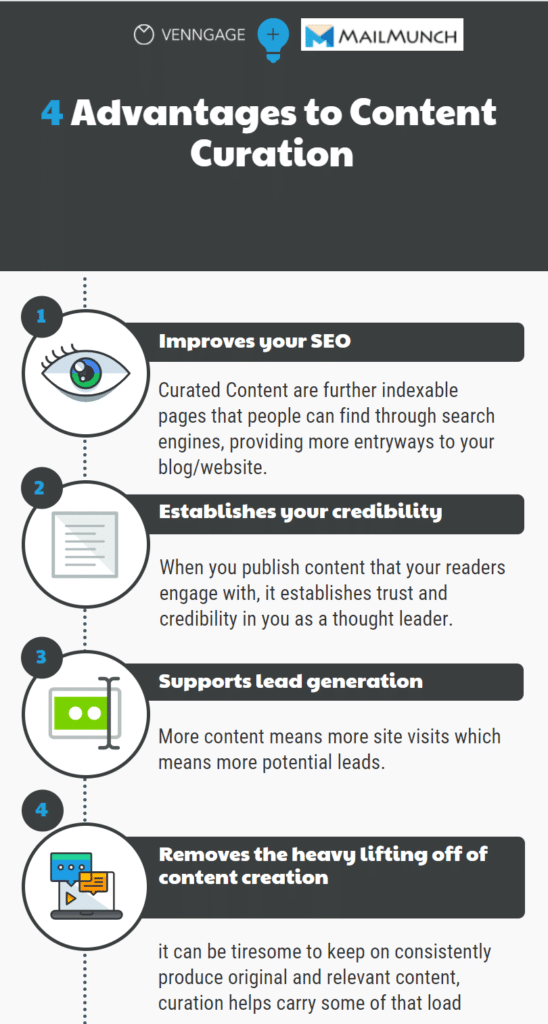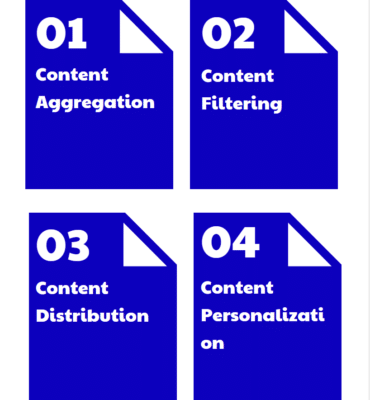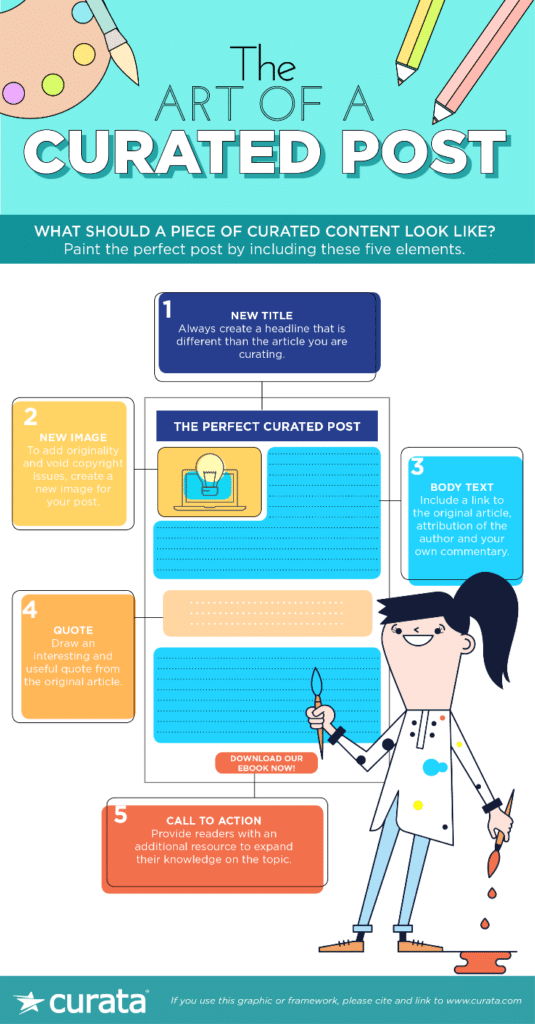This article was contributed by Rukham Khan.
You’ve finally turned that business idea that you’d been dreaming about forever, into an actual product or service.

You can’t wait to get the business started.
Or maybe you’re just really passionate about a certain topic and want to share your love through a blog.
You’ve built an amazing website and just about everything is right…except there’s no traffic.
You’re scratching your head at this point, seemingly having done everything by the book but you’re still not getting any traffic or leads. There’s no need to worry though.
The answer lies in Content Curation.
According to Hubspot, 63% of companies claim that lead generation is their biggest challenge, coupled with 53% of marketers saying blog content creation is a top priority for them. So if all these companies are looking to create leads through content, there must be someone who has figured it out? Right?
Luckily there exists a strategy that substitutes the heavy resource-dependence of content creation, and also increases the number and/or quality of sales-ready leads.
Courtesy Hubspot
Along with creating content for your blog, you’ve got to curate content to keep customers engaged.
What is Content Curation
So now that we’ve figured out that a mix both creating and curating content works best. What actually is content curation? Hootsuite provides an apt explanation:
“the process of content curation is the act of sorting through large amounts of content on the web and presenting the best posts in a meaningful and organized way. The process can include sifting, sorting, arranging, and placing found content into specific themes, and then publishing that information.”
Courtesy Raphaëlle RIDARCH
So basically, content curation is the process of digging the web for content relevant to your brand, selecting and posting the best content for your viewers and adding value through informing them why the content is worth their time.
Good and consistently curated content can help establish your blog as an authority on a topic. When you have credibility and authority, people will come to you to seek information. More people means more traffic and more traffic means an increase in sales leads (or ad revenue potential).
Why Content Curation is the Perfect Strategy
Some of the advantages of content curation are:
- Improves your SEO: Curated Content is further indexable pages that people can find through search engines, providing more entryways to your blog/website.
- Establishes your credibility: When you publish content that your readers engage with, it establishes trust and credibility in you as a thought leader.
- Supports lead generation: more content means more site visits which means more potential leads.
- Complements social media and blogs: curated content is also a great tool to keep your social media followers engaged by scheduling industry-relevant content. This facilitates social media conversations and helps you attract more followers.
- Removes the heavy load from content creation: it can be tiresome to keep consistently producing original and relevant content, curation helps carry some of that load.
These benefits are succinctly summed up by the team at Curata
“content curation helps you deliver improved content marketing ROI, lower per-lead costs, greater efficiency, increased credibility, and all the other benefits of a robust content or ‘inbound’ marketing strategy.”
You can also save a whole lot of money by curating content and not having to hire writers to write for you.
How to Curate Content
We’ve gone through the whats and the whys of content curation. Now, how do you actually curate content? And how do you make the content personal and relatable?
There are 4 main steps to content curation:
- Content Aggregation
- Content Filtering
- Content Distribution
- Content Personalization
Step 1: Aggregate Content
There are a few ways you can start collecting on the topic of your choice, you can
- Follow influencers on social media who’re experts on the subject of your choosing
- Use blog aggregation tools like Feedly to collect blogs. They let you view posts from various websites all under a single banner
- Search for video content on channels like Youtube, DailyMotion, Medium and use Soundcloud to discover relevant podcasts
- Search Goodreads for Books to research for long-form content (but don’t post or write on Books if you haven’t read them yourselves!)
These sources should get you started. Once you get the feel of collecting from these sources, you’ll have more content than you’ll know what to do with!
It’s best if you save and organize all your content candidates on an app like Evernote, Google Docs, Notability or SmartSheet.
If you’re working as a team, you can even use Asana to collect and schedule your content.
These softwares and services keep your notes, links and clippings archived and organized.
Step 2: Filter Content
You’ve scoured the web and gathered content candidates from all over. Now we sift through these candidates to choose the best content, the stuff we’re going to share.
A right-hand rule to gauging whether the content is worth publishing is to put yourself in the shoes of your audience and see if they would enjoy it.
Each piece you publish must demonstrate your interest in the topic or industry you’re posting about, it should establish thought leadership, and/or provide a solution to a specific problem in your chosen domain.
Step 3: Distribute content
After you have decided on what you’re going to share, you will be sharing your expertly curated content across platforms such as Twitter, Facebook, Linkedin, Emails, and Blogs.
The exact channel selection will depend on your marketing strategy and effectiveness of reach of each channel, a question you must ask is: is this the right platform to be engaging my audience?
You can gauge that if you know you target audience.
For example, if you’re posting content on the latest celebrity news, you can get better engagement on instagram and twitter. Similarly if you share the same content on LinkedIn, you might not get a good response as linked in mostly used for networking and business industry news.
but Email is usually a safe bet, its a universal platform used by almost any one who has a computer or a phone.
80% of retail professionals indicate that email marketing is their greatest driver of customer retention. Besides email subscribers are 3x more likely to share content on social media than leads who came through another channel, according to QuickSprout.
There are some great tools to help you design emails, some good options to get you going are MailMunch, Mailchimp or Campaign Monitor. These software integrations offer fully customizable themes and A/B testing, just to name a few features.
Step 4: Add a Personal Touch
The ‘art’ in art of content curation comes from 2 aspects.
First, it comes from practicing content curation and over time developing a keen eye and a knack for great content your audience is bound to enjoy.
Second, the art is in personalizing the content you’re sharing.
Add splashes that colorize the content and brings out your true flavor. These can be commentaries about the post, images, or they can be complete articles responses on your content of choice.
A great practitioner of content curation is Maria Popova who runs the Brain Pickings blog. She writes long-form content with detailed reviews on books and notable historic personalities.
She has 881,000 followers on Twitter, 171,000 on Instagram and a whopping 5 million fans on her Facebook page and god knows how many email list subscribers!
Her success comes from having chosen a brilliant niche to write in. She writes about the meaning of life (which let’s face it everyone is looking for) and she chooses great books and personalities to review. But what makes her content really great is her personal touch of detailed commentary that people really enjoy reading. Here’s how she herself describes how she came to be where she stands today:
“My philosophy, and the one thing I’ve been strategic and deliberate about from the beginning is reader first …”
Take a leaf out of Maria’s book and you can expect great engagement with your curated content.
Know Your Audience
By now you’re hopefully convinced to start curating yourself to drive those traffic numbers up.
But scavenging the internet for influencers, tools, and content will be useless if we don’t actually know who we’re addressing in our curated posts.
Do you really know your audience? A simple question, sure, but one that is more complex than it might seem. Most brands want to create content that reaches millions, but that may not be the right approach. Content strategy should be value over volume.
This doesn’t mean that you shouldn’t be striving for volume either, in fact, Companies that published 16+ blog posts per month got about 4.5X more leads than companies that published 0-4 monthly posts.
What value over volumes means is quality always comes first.
If you are putting out content that offers thin air, you can pump out in excess of 20 posts a month but they won’t mean a thing to your readers and customers.
Patrick Armitage, Director of Marketing at BlogMutt, has great advice for marketers and bloggers looking to curate content:
“Great curators build trust with their audiences and become an indispensable resource as they help to sift through online information to distribute what’s worth reading.”
And the only way to build trust with your audience is to first know who these people are. Really dig in, find out and engage your customers, monitor social media conversations, use segmentation tools, Google Analytics, SEO research…whatever it takes to assemble a complete picture of the people you’re serving.
Another strategy to figure out your consumers is to create ‘audience personas’. These personas are fictional, general qualitative representations of your ideal audience. These personas help to attract the people we want to curate for, and view them as actual humans (and not numbers) while we do it.
Some questions that you can ask to get a better image of your audience includes:
- What jobs/titles they have
- What skills do they possess/want to have
- What are the challenges you can solve for them
- What type of information do they seek online
- What sort of content do they enjoy online
These are just some basic questions you can get started with. You can create more specific questions according to the purpose of your blog or website to create more meaningful audience personas.
You Have Great Content… Now What?
There you go, you are now absolutely ready to go out and start collecting and curating content on your own.
Fast forward a bit…
Let’s safely assume you’ve followed all the steps, you’ve found the best sources for content, you’ve figured out your distribution strategy.
You’ve even developed that touch of a professional curator, who knows what and who they’re serving. You keep on rolling out content regularly and surely.
Now what?
It’s great that you’re putting out content, but the story doesn’t end there. The big payoff comes from creating an engaged following and improving your SEO rankings.
As mentioned earlier, whatever topic you curate content for, it is in your benefit to be seen as an authority if you want to make sales or earn ad revenue, and high SEO ranking are one measure of subject authority.
When you have published great content, you need a dedicated following who you can regularly address with your messages.
These customers will receive your finely tuned content, increase visits to your website, and share with others, events that will increase your search rankings. You don’t have to collect website visitors manually though, email capture technologies like MailMunch can assist you in building your email lists.
You can convert visitors into leads through landing pages and pop-ups which are non-intrusive and captivating, and there is little to no coding involved in getting it set-up.
Start using these tips today to curate content. We would love to hear from you how your content curation journey unfolds!
—
About the author: Rukham Khan writes on e-commerce and email marketing topics to help people understand the industry landscape. He believes trust should be the basis for all marketing communications. In his personal time, he writes on Medium on topics ranging from music to psychedelics. Lead magnet image by VecktorKnight on Shutterstock.






